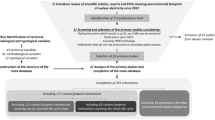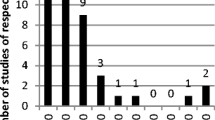Abstract
Goal, Scope and Background
The energy systems included in the ecoinvent database v1.1 describe the situation around year 2000 of Swiss and Western European power plants and boilers with the associated energy chains. The addressed nuclear systems concern Light Water Reactors (LWR) with mix of open and closed fuel cycles. The system model ‘Natural Gas’ describes production, distribution, and combustion of natural gas.
Methods
Comprehensive life cycle inventories of the energy systems were established and cumulative results calculated within the ecoinvent framework. Swiss conditions for the nuclear cycle were extrapolated to major nuclear countries. Long-term radon emissions from uranium mill tailings have been estimated with a simplified model. Average natural gas power plants were analysed for different countries considering specific import/export of the gas, with seven production regions separately assessed. Uncertainties have been estimated quantitatively.
Results and Discussion
Different radioactive emission species and wastes are produced from different steps of the nuclear cycle. Emissions of greenhouse gases from the nuclear cycle are mostly from the upstream chain, and the total is small and decreasing with increasing share of centrifuge enrichment. The results for natural gas show the importance of transport and low pressure distribution network for the methane emissions, whereas energy is mostly invested for production and long-distance pipeline transportation. Because of significant differences in power plant efficiencies and gas supply, country specific averages differ greatly.
Conclusion
The inventory describes average worldwide supply of nuclear fuel and average nuclear reactors in Western Europe. Although the model for nuclear waste management was extrapolated from Swiss conditions, the ranges obtained for cumulative results can represent the average in Europe. Emissions per kWh electricity are distributed very differently over the natural gas chain for different species. Modern combined cycle plants show better performance for several burdens like cumulative greenhouse gas emissions compared to average plants.
Recommendation and Perspective
Comparison of country-specific LWRs or LWR types on the basis of these results is not recommended. Specific issues on different strategies for the nuclear fuel cycle or location-specific characteristics would require extension of analysis. Results of the gas chain should not be directly applied to areas other than those modelled because emission factors and energy requirements may differ significantly. A future update of inventory data should reconsider production and transport from Russia, as it is a major producer and exporter to Europe. The calculated ranges of uncertainty factors in ecoinvent provide useful information but they are more indications of uncertainties rather than strict 95% intervals, and should therefore be applied carefully.
Similar content being viewed by others
Author information
Authors and Affiliations
Corresponding author
Rights and permissions
About this article
Cite this article
Dones, R., Heck, T., Faist Emmenegger, M. et al. Life Cycle Inventories for the Nuclear and Natural Gas Energy Systems, and Examples of Uncertainty Analysis (14 pp). Int J Life Cycle Assessment 10, 10–23 (2005). https://doi.org/10.1065/lca2004.12.181.2
Received:
Accepted:
Published:
Issue Date:
DOI: https://doi.org/10.1065/lca2004.12.181.2




